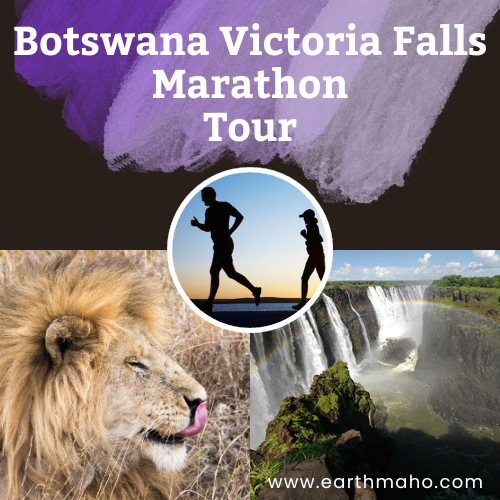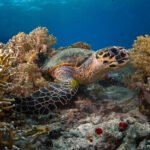The intention of this Namibia travel guide (FAQ) is to briefly provide the most essential information for a (guided) safari trip in Namibia:
Namibia Travel Guide Overview:
- When is the best time to visit Namibia?
- What to pack for a safari in Namibia?
- What type of luggage? Suitcase or backpack?
- How about health & hygiene?
- How safe is Windhoek/Namibia?
- How to stay connected in Namibia?
- What are the emergency numbers in Namibia?
- Money Matters in Namibia:
- Random Facts about Namibia
When is the best time to visit Namibia?
The best time to visit Namibia is the dry season, from May to October (winter).
Dry season is considered optimal for wildlife viewing. Wildlife congregates around rivers and watering holes, making animals much easier to spot. It’s however the busiest and most expensive time in Namibia for a safari. It’s vital to book everything well in advance.
Additional info: The rainy season falls between November and April, which is considered summer, with December to March being the least favorable time to visit Namibia. Hot and humid weather, flash floods, impassable roads, higher risk of malaria, limited game viewing are some of the cons of rainy season. The advantages would then naturally be a lower budget and less crowds.
What to pack for a safari in Namibia?
During June/July/August, it can get very cold during the night (10 °C / 50 °F and below), so be sure to pack warm clothing. Temperatures start to rise in September. Average daytime temperature in June is about 20 °C/ 68 °F and in October 29 °C / 84 °F. This brings us to our next topic.
Given the chilly nights and mornings and warmer daytime temperatures, you’ll need to pack wisely. Basically, we recommend the onion principle. Start the day in the morning with many layers of clothing and gradually remove items of clothing throughout the day. Vice versa in the evening.
Here is our recommend packing list for Namibia:
- A warm down jacket and sweaters for evenings and windy Atlantic coast!
- Lightweight rain jacket or durable rain poncho (if travelling in rainy season).
- Sturdy shoes for hiking (ideally ankle high). Many paths in Namibia are full of thorns that can quickly pierce through thin soles.
- Long and airy clothes, as the sun will beat down so hard in the desert.
- Casual, robust travel clothing (e.g. zip pants).
- Flip-flops are very practical for the campsite to relax your feet.
- Headgear (ideally a wide-brimmed hat).
- Buff to keep the dust away from your mouth/nose/hair.
- Waist bag, a small purse or crossbody bag.
- Sleeping bag (3-4 season rated) or sleeping bag liner for added hygiene should you wish to rent a sleeping bag.
- Sunglasses.
- Swimwear.
- Second-hand binoculars.
- Reusable water bottle.
- Packing cubes to organize your luggage, waterproof bag set to protect your valuables from the elements.
- Universal travel adapter (sockets type D and M). Most common plug in Namibia is Type M, South African 3-pin style plugs.
- Powerbank.
- Headlamp.
- Camera with spare batteries/rechargeable batteries and enough storage.
- Protect your electronic devices not only from dust and sand, but also from the heat. So pack a bag for your camera, and, if necessary, a laptop bag. The climate in Namibia can be challenging not just for travelers. It is best to leave your laptop at home.
- Passport that is valid for at least six months after departure.
- Copy of your passport (keep it separate from your passport and email yourself a copy).
- Insurance documents and any emergency numbers.
- First aid kit and personal medications.
What needs to be in the first aid kit and toiletry bag?
Namibia is scarcely populated, and you will often be a far away from the nearest pharmacy or doctor. It’s wise to carry any medication you think you might need with you.
- Personal medications,
- Stand-by antimalarials (requires a prescription),
- Painkiller (e.g. Ibuprofen, Aspirin),
- Medication for motion sickness, diarrhea and constipation,
- Wound disinfection, bandage material (gauze bandages (8cm), sterile compresses (7.5×7.5cm), etc.),
- Blister plasters, patch plasters
- Disposable gloves,
- Mosquito repellent and anti-itch gel,
- Sunscreen with a high sun protection factor,
- Contraceptives (condoms),
- Hand disinfectant,
- Water filter or iodine disinfection tablets,
- Eye drops for sore/dry eyes (e.g. long-haul flights),
- Spare glasses, contact lenses (if applicable),
- Ear drops,
- Before you leave, check the expiry dates of all items (for liquids and ointments, the expiry date only applies to unopened packages).
Please make sure to discuss the composition of your first-aid kit with your family doctor.
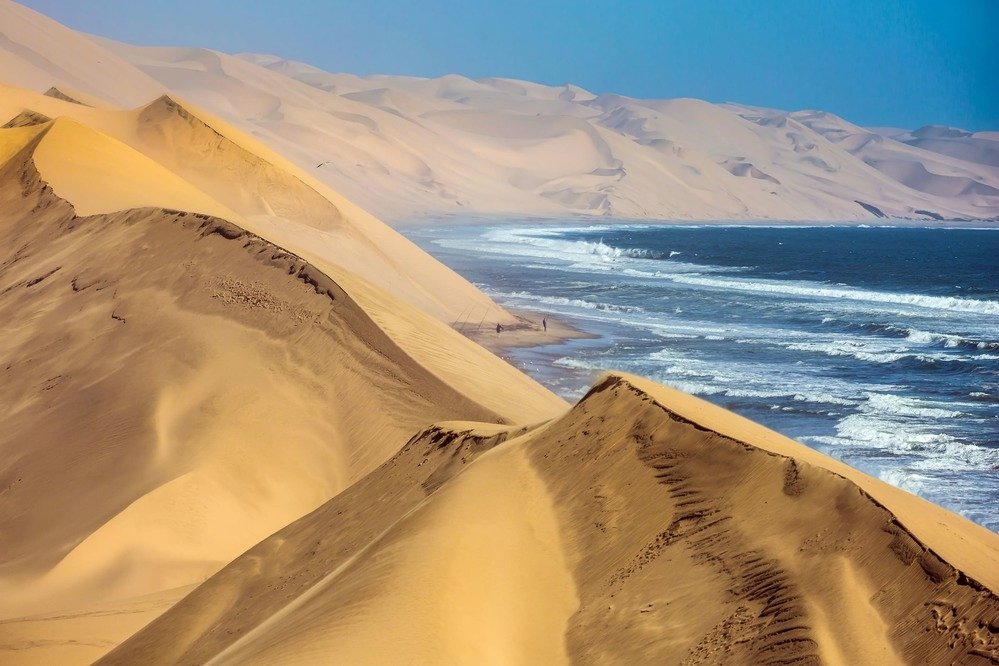
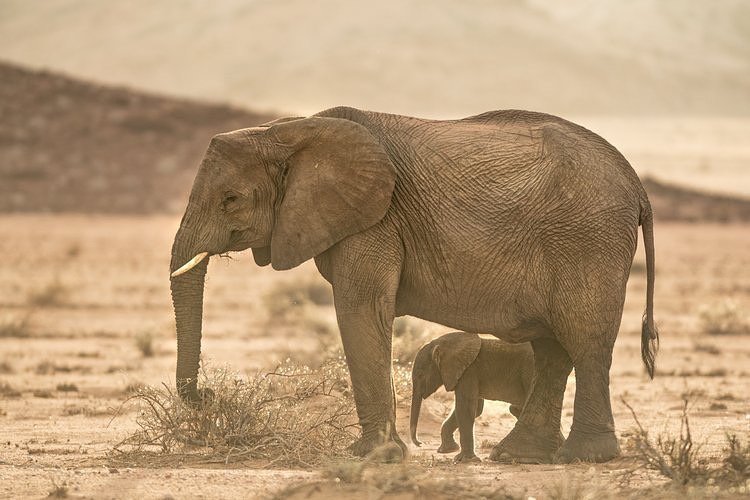
What type of luggage? Suitcase or backpack?
We recommend a travel backpack, or a duffle bag, basically a soft piece of luggage for Namibia. This makes it easier to handle on rough terrain and practically takes up much less space in the trunk of the vehicle than a hardcase luggage. And it’s also important to have adequate dust and sand protection. You can consider packing cubes and dry bags to organize your luggage and for extra layer of protection.
A small daypack is recommended to carry your items you will need throughout the day, like camera, snacks, water bottle, extra layers, etc.
How about health & hygiene?
It is essential to get medical advice before traveling to Namibia, and take out a travel insurance. We personally use Safety Wing on our travels.
Malaria in Namibia
There is virtually no risk of Malaria in the dry season, except in the very north of the country. However, we strongly recommend that you discuss the topic with your doctor and have at least a stand-by medication in your travel first-aid kit just in case. Also, wear light-colored long-sleeved shirts and long pants around dusk and dawn.
Which vaccinations do I need in Namibia?
Due to its dry and warm climate, Namibia is almost free of tropical diseases, which is why no vaccinations are required. We recommend that you are up-to-date with the regular immunizations (tetanus, diphtheria, pertussis, measles, polio, hepatitis,…), plus a consultation with your family doctor.
Yellow Fever vaccination is not required if you are traveling from a risk-free region. Please check the requirements for your country of origin at this link here.
Is tap water in Namibia safe to drink?
Tap water in Namibia is safe to drink except in a few rural areas. But the water is heavily chlorinated and therefore doesn’t taste very good. In the north or Caprivi, Botswana and Vic Falls you should be careful and use bottled water. We recommend that you always have a supply of water bottles with you.
On our organized trips, our guides will advise you duly.
How safe is Windhoek/Namibia?
Namibia is one of the safest countries in Africa. However, like everywhere else in the world, you should use common sense.
- Use caution at the ATM. For example, do not accept help from strangers.
- Don’t walk around in the dark, especially drunk and alone. Ask the restaurant/bar if they can call a taxi for you.
- All official taxis in Windhoek carry registration numbers. Never get into a taxi without a registration number! In Windhoek we recommend the taxi service App LEFA https://lefa.com.na.
- Always keep cash and credit cards separate in a fanny pack/chest bag and lock your other valuables and documents in the hotel safe.
These instructions are intended as a rough guideline. For detailed information, please refer to the Ministry of Foreign Affairs or your embassy.
How to stay connected in Namibia?
In Namibia the two main networks you will be using are MTC (https://www.mtc.com.na/prepaid) and TN Mobile. You can buy a SIM card with mobile data directly at the airport in Windhoek. The reception is good in big cities, but poor to very bad in rural areas. So, don’t count on a stable internet coverage during your trip in Namibia. Prices vary depending on the data package.
What are the emergency numbers in Namibia?
- IN EMERGENCY DIAL 10111 (from landline) or 999 or 112 (from cell)
- Fire Station: 211 111
- Ambulances
eMed Rescue 24: +264 83 924
Lifelink Emergency Rescue Services: 999 | 081 95 900 00 | +264 64 500 346 (landline) - German Embassy in Windhoek: +264 61 27 31 00
- International Dialing Code for Namibia: 00264 / +264
Money Matters in Namibia
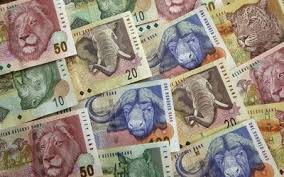
Can I use USD/EUR/GBP etc. in Namibia?
The official currency is the Namibian dollar (N$). In Namibia, the Namibian dollar (NAD) and the South African Rand (ZAR) are equivalent means of payment (but not the other way around!). Due to the better exchange rate, cash should only be exchanged locally. The major currencies are not accepted for payment and must be exchanged.
How much cash can you take with you to Namibia?
The import of local currency is possible up to an amount of 50,000 USD, but for an amount of 5,000 NAD or more it must be declared upon entry. As of February 27, 2024, that’s about 250 USD.
What kind of credit card should I use?
VISA credit card is much more widely accepted than Mastercard.
Where do I exchange cash for Namibian dollar?
You can exchange major currencies at the airport and in bank in larger cities. At the ATM you can withdraw money with credit card (at the airport only with VISA card). It is best to withdraw at the airport 3000 NAD per person.
Note: While ATMs are available in major cities, this is not always the case in remote areas. So it’s best to have multiple payment options and always have cash with you. Access to some ATMs is occasionally linked to the bank’s opening hours.
Banks in Namibia open Monday to Friday between 9 a.m. and 3:30 p.m., and on Saturdays they open at 9 a.m. and close at 11 a.m.
Travel cost in Namibia?
Namibia is usually touted as the best country for introduction to Africa. However, compared to other destinations it is not the most budget friendly in Africa.
Side info: On our guided trips like this one, prices are negotiated in advance for the group. Additionally, value for money is optimized through our signature blend of activities, adventure camping and creature comforts. You would solely account for a few meals deliberately left out to diversify your options, and tips for local guides.
To give you an idea: In Namibia, simple meals like hamburgers, pizza or a salad usually cost around 5 EUR/USD. A beer costs between 30 and 45 NAD (= approx. 1.50 to 2.25 EUR). A liter of water costs around 30 NAD or around 1.50 EUR (as of 2024).
How much do you tip in Namibia?
In general, a tip of around 5-10% of the bill amount (restaurant) is added to all prices.
A porter gets around N$5-10 per person/luggage.
Suggested tip for tour guides/rangers = N$20-25 per day/person and for drivers = N$10-15 per day/person. This tip is given at the end of the safari or stay at your camp/hotel, not on a daily basis.
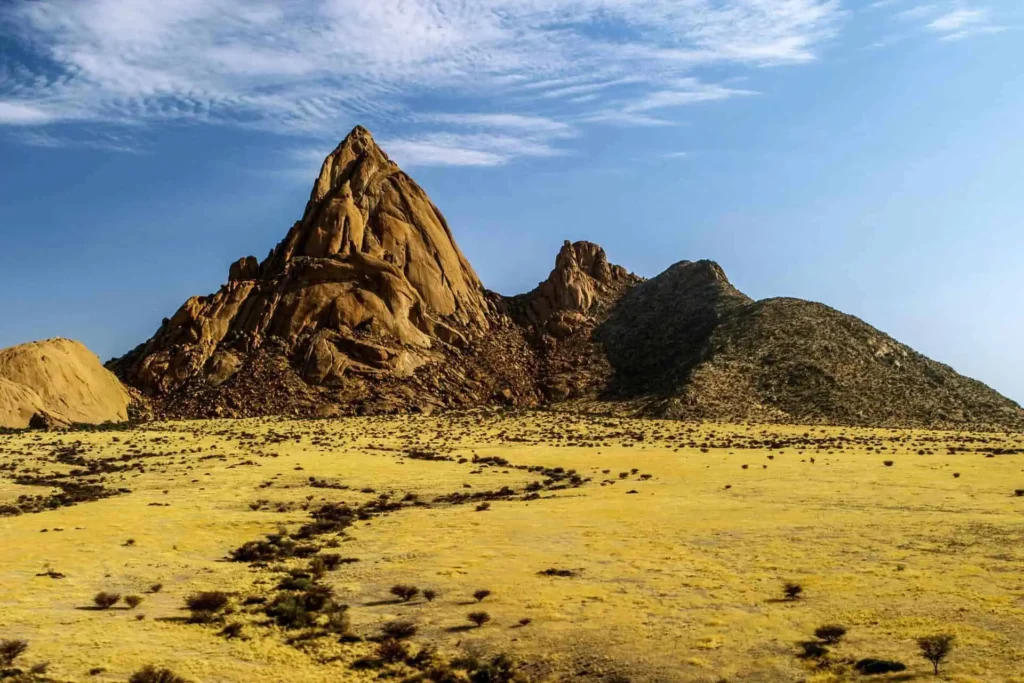
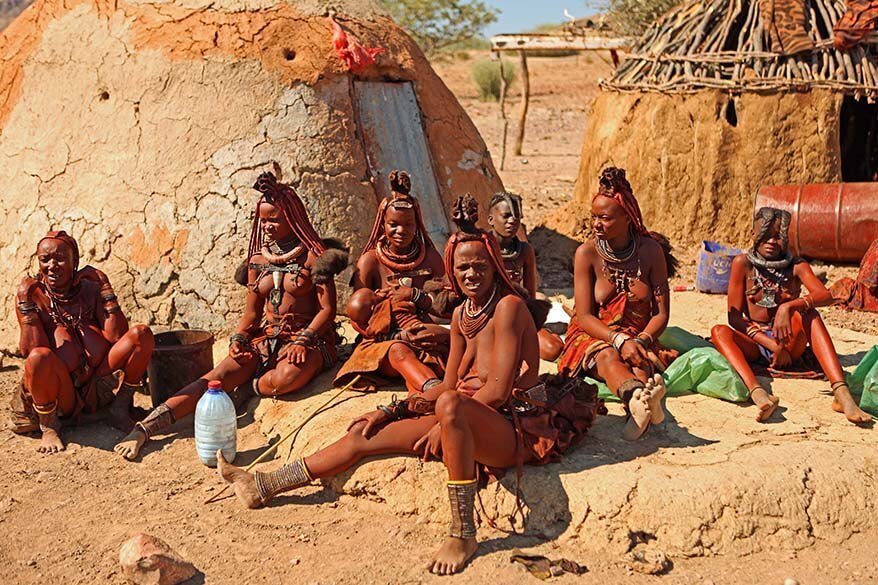
Random Facts about Namibia
- The name of the Namibian capital, Windhoek, is translated from Afrikaans and means windy corner.
- Swimming in rivers is not recommended (crocodiles!!).
- One of Namibia’s main attractions is the Skeleton Coast National Park. In addition to many animals and birds, there is an abandoned oil rig where cormorants nest, the hull of a crashed ship, a unique waterfall in the desert and dunes that rumble like an aircraft engine in a certain wind direction – the noise can be heard for several kilometers.
- Foodies consider Namibian oysters to be one of the best in the world due to their size and taste.
- Namibia is the only country in the world where the number of rhinos continues to increase.
- Namibia has a road network of almost 65,000 kilometers, although only 5,000 kilometers are paved. In this country, traffic drives on the left.
- The state’s motto is “Unity, Freedom, Justice.”
- Useful words for your trip:
- Hello – Hallo
- How are you? – Hoe gaan dit?
- I’m fine/good. – Goed, dankie!
- Thank you. – Dankie
- Please. – Asseblief
- Goodbye. – Totsiens
Every scene and every sighting in Namibia is unique, and your holiday will be a life-changing experience. Feel free to chat with us if you need help organizing your dream trip! You can find all communication channels on our contact page.
Welkom in Namibië!
Yours
MAHO on Earth Team

